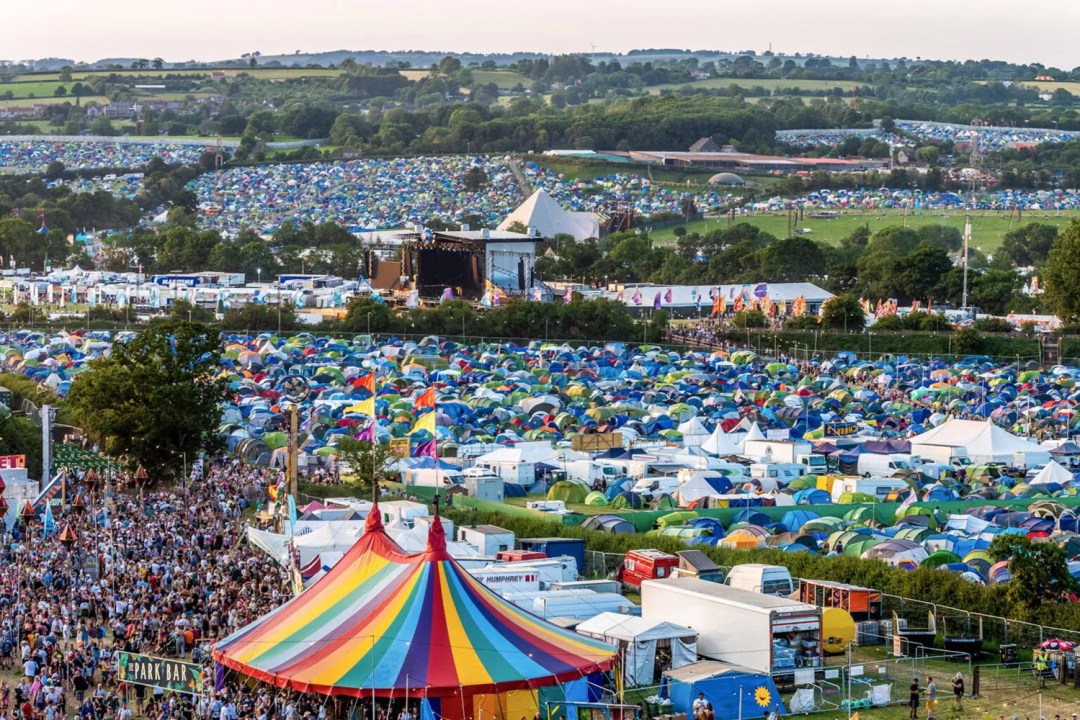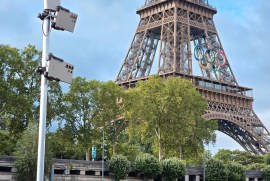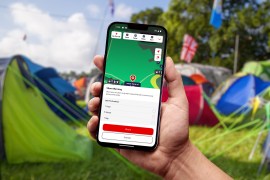How do phone networks actually work at events like Glastonbury?
For every large event, stacks of temporary masks appear - but what’s involved?

How do you go about setting up a mobile phone network at an event like Glastonbury? The Somerset, UK festival is a five-day event and the on-site network needs to be fully functional and reliable across the event but then completely removed in the days after.
But this isn’t a problem unique to Glastonbury. Mobile networks often set up temporary masts for special events – indeed, last summer Vodafone covered over 70 special events including the Coronation, Royal Ascot and Wimbledon. Indeed, Vodafone said that its customers used 80% more 5G data in 2023 compared to 2022 across all these events.
Vodafone is the official connectivity partner of Glastonbury and last year rolled out nine masts around the site to provide full 4G and 5G coverage (5G first arrived at Glastonbury back in 2019 when EE provided the official network). This year there will be 10 of its masts around the site and the network took three weeks to set up. Vodafone also supports the vast site’s general connectivity with around 2,500 temporary SIMs given out to bar operators, emergency services and so on.
The network also trialled 5G network slicing at the event, offering dedicated connectivity to the company that operated most of the bars at the festival, meaning that transactions could be processed quickly without being delayed by other network use.
At Glastonbury 2024, Vodafone said that over 225 terabytes of data were used by its customers, which is around a third up on 2023. Last year, 169 terabytes of data was used in total, including 450GB during Elton John’s two-hour headline set.
Vodafone said at the time that this was 99% more data than used in 2022 and it’s no wonder the data usage skyrocketed – it offered all festival goers 50GB of data for 7 days through a free eSIM.
The planning of the network for each event is quite different – for example where Glastonbury has 10 masts this year, Wimbledon gets just one as it is quite compact.
The masts are affectionately known as COWs, or “cells on wheels” as they’re basically a trailer what comes with a few engineers in tow. They need power and data links – as well as as a good location. They take a minimum of day to set up, though it can often be two or three and they need to be monitored as they’re working to ensure that they work optimally.
That’s a challenge – especially at events with dynamic locations like Glastonbury. Engineers can look at previous patterns, but what if there’s a new stage or a secret set that brings vast unplanned for crowds? So there’s ongoing work that needs to be done. Vodafone’s head of network deployment Frederic Sundin explained before Glastonbury last year: “You have stages in the way, depending on where the special event is, or it can be hilly, it can be trees. That can block the signal. And you need to predict where the crowds will be, because they move around.”

There are a lot of logistical challenges with rolling out the masts – from getting power to the COW, to the transportation of major hardware down country lanes to access from landowners. In terms of power, this is provided by diesel generators if it can’t come from elsewhere. Sometimes short-range microwave links are used to link them to more accessible locations and then onto fibre optic links. However, the microwave links pose their own challenges as they need to have line-of-sight with the next mast along the chain. That can be a challenge if space is an issue (space isn’t an issue at Glastonbury).
Vodafone’s 10 masts compares to nine from EE, eight from Virgin Media O2 and six from Three according to analyst CCS Insight. Interestingly, the analysts say that traders at music festivals are increasingly turning to satellite solutions to bring connectivity in such busy locations – with Starlink being the obvious example.
CCS also says that Vodafone has a trial of what is called a 5G network slice at Glastonbury, where there’s dedicated network access separate from the public network – that’s something which we’ll see a lot more of at such populated events in the coming years.



